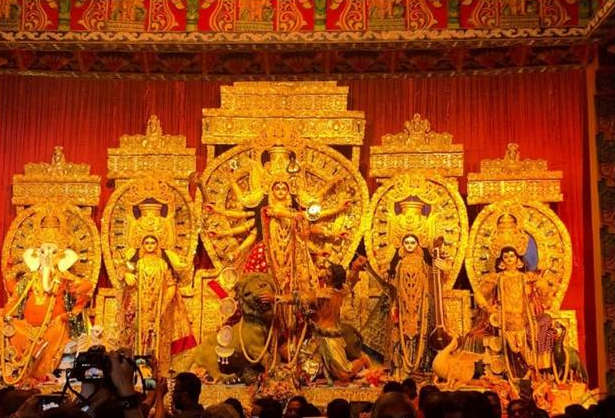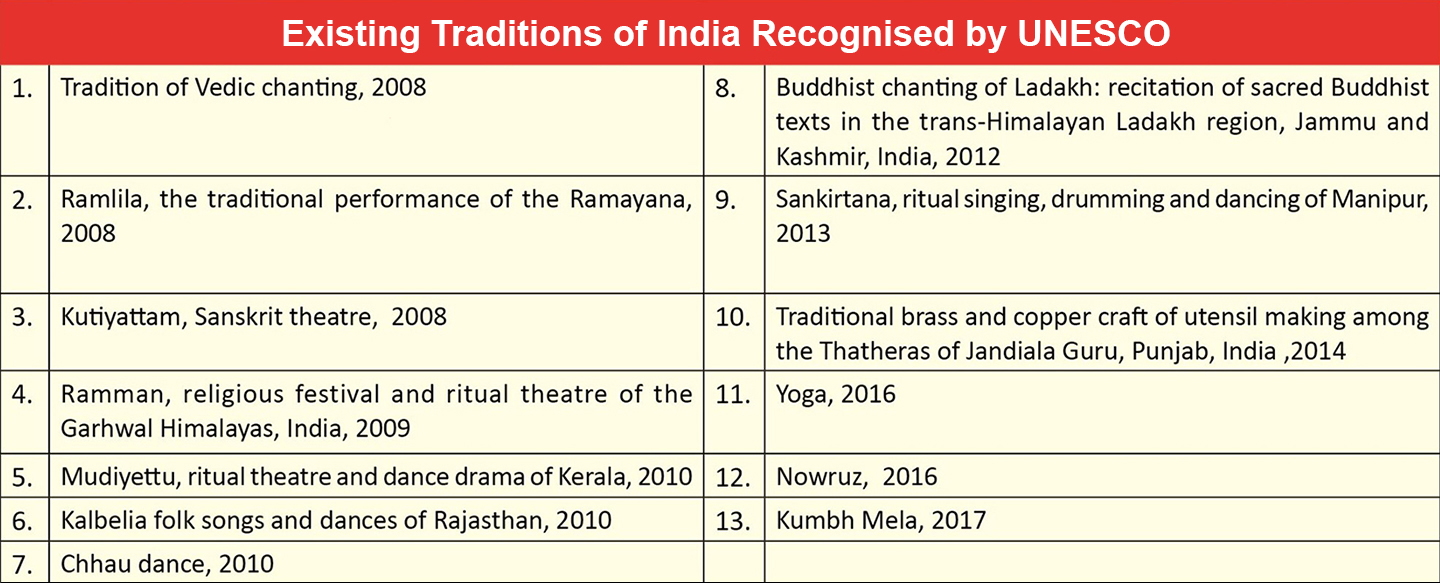Durga Puja on UNESCO’s ICH
For Prelims: UNESCO ICH of Humanity, UNESCO, Man and Biosphere Programme, World Heritage Programme, UNESCO Global Geopark Network, UNESCO's Network of Creative Cities
For Mains: Importance of protecting Cultural Heritage for India, Significance of Intangible Cultural Heritage of Humanity.
Why in News
Recently, Durga Puja in Kolkata has been inscribed on the UNESCO’s Representative List of the Intangible Cultural Heritage (ICH) of Humanity.
- It is the first festival in Asia to achieve recognition as UNESCO ICH of Humanity.
- Earlier, UNESCO announced the Harappan city of Dholavira in Gujarat as India’s 40th world heritage site.
Key Points
- Durga Puja:

- Durga Puja is a five-day festival which begins on the fifth night of the nine-day Navratri festival and ends on the tenth day, which is Dashami.
- During this time, people collectively worship and invoke Goddess Durga, who is regarded as the feminine energy of the cosmos, also known as ‘Shakti’.
- It is one of the largest cultural carnivals and street art festivals of the country.
- During this time, intricately-designed clay models of the Goddess are worshiped in ‘pandals’ and pavilions where people get together.
- Folk music, culinary, craft, and performing arts traditions are a part of the celebration.
- Though originating in West Bengal, which has the largest Bengali community in the country, the festival is celebrated in many other parts of India, and also the world.
- Significance:
- It acknowledges the festival’s contribution in sustaining and safeguarding a multitude of traditional arts and crafts, well-being and economic empowerment of communities, and energizing creativity.
- Earlier this year (2021), the British Council in India had mapped the creative economy of Durga Puja to over Rs. 32,000 crore for the year 2019 and added that the festival contributes 2.58% of West Bengal’s Gross Domestic Product (GDP).
- It acknowledges the festival’s contribution in sustaining and safeguarding a multitude of traditional arts and crafts, well-being and economic empowerment of communities, and energizing creativity.
- UNESCO’s List of Intangible Cultural Heritage:
- This coveted list is made up of those intangible heritage elements that help demonstrate diversity of cultural heritage and raise awareness about its importance.
- According to UNESCO cultural heritage does not end at monuments and collections of objects.
- It also includes traditions or living expressions inherited from our ancestors and passed on to our descendants, such as oral traditions, performing arts, social practices, rituals, festive events, knowledge and practices concerning nature and the universe or the knowledge and skills to produce traditional crafts.
- The list was established in 2008 when the Convention for Safeguarding of the Intangible Cultural Heritage came into effect.
- The Ministry of Culture (India) has also launched the draft National List of Intangible Cultural Heritage (ICH) of India.
- The National ICH List is an attempt to recognize the diversity of Indian culture embedded in its intangible heritage.
- This initiative is also a part of the Vision 2024 of the Ministry of Culture.
- India is also a signatory of the 2003 UNESCO Convention which aims for the Safeguarding of the Intangible Heritage along with traditions and living expression.
- Inscripted Elements:
- Currently, it has 492 elements from which India now has 14 intangible cultural heritage elements on the prestigious UNESCO Representative List of ICH of Humanity.
- Other than the Durga Puja there are 13 Traditions in India recognised by UNESCO as ICH .
UNESCO
- About:
- UNESCO is the United Nations Educational, Scientific and Cultural Organization. It seeks to build peace through international cooperation in Education, the Sciences and Culture.
- UNESCO's programmes contribute to the achievement of the Sustainable Development Goals defined in Agenda 2030, adopted by the UN General Assembly in 2015.
- It has 193 Members and 11 Associate Members. India joined UNESCO in 1946.
- It is headquartered in Paris, France.
- UNESCO-IOC (Intergovernmental Oceanographic Commission) is leading a global effort to establish ocean-based tsunami warning systems as part of an overall multi-hazard disaster reduction strategy.
- Last year (2020), UNESCO-IOC approved the recognition of two communities of Odisha viz., Venkatraipur and Noliasahi as Tsunami Ready Communities.
- Other Initiatives of UNESCO
